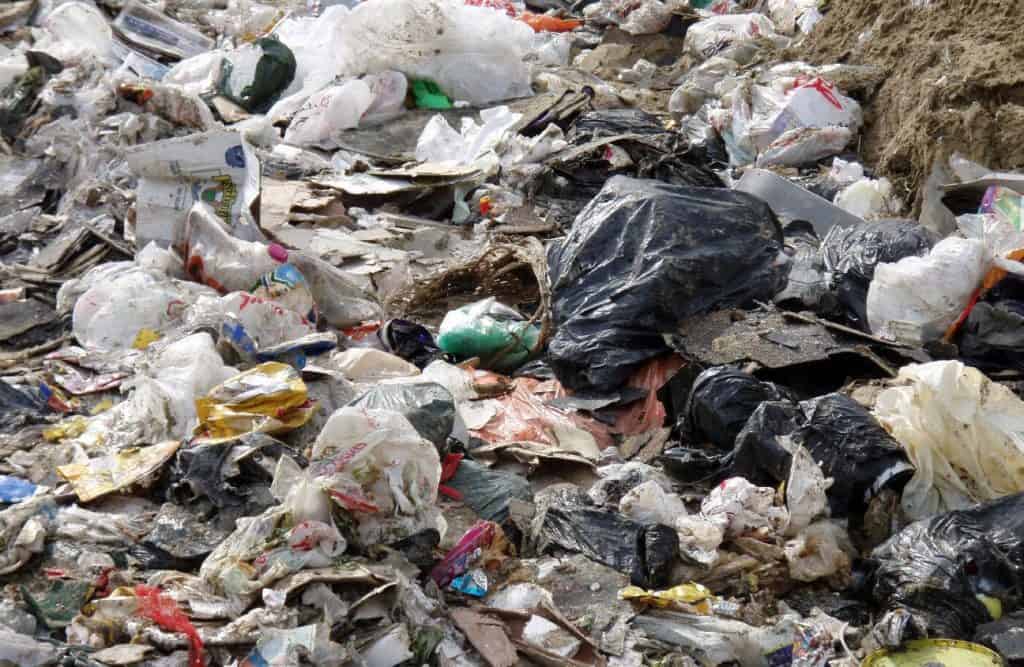By Timothy B. Wheeler, Bay Journal News Service
Throwing food away is more than wasteful. When it gets buried in a landfill, it generates methane, a climate-warming greenhouse gas many times more potent than carbon dioxide.
A new report by the nonprofit Environmental Integrity Project finds that Maryland’s municipal landfills are releasing much more methane than previously estimated.
The group estimates that rotting food and other waste in Maryland’s municipal landfills sent about 51,500 tons of methane into the atmosphere in 2017, the most recent year for which complete data were available. That was four times the 12,500 tons that had been estimated by the state Department of the Environment.
“This shows that Maryland really needs to do a better job of reducing, controlling and measuring greenhouse gases from landfills,” said Ryan Maher, an attorney with the group and lead author of the report. “We need to reduce our food waste, compost more and impose strong new air quality regulations that require improved methane controls systems at our state’s landfills.”
Carbon dioxide from burning fossil fuels and other activities is by volume the main cause of global climate change. But even though much less methane is released and it is relatively short-lived in the atmosphere, it has drawn increasing scrutiny because its warming potential is 25 to 86 times greater than CO2.
While much of the concern with methane has focused on leaks from natural gas wells, compressor stations and pipelines, the EIP report found that landfill emissions are actually the leading source of methane in Maryland.
Maher said that because of errors in the way it was modeling landfill emissions, the MDE had been underestimating the amount of methane released since 2006.
MDE Secretary Ben Grumbles issued a statement saying regulators agree with the group’s findings and have revised their landfill emission estimates to correct the mistakes. The MDE now estimates that net emissions from landfills in 2017 were about 58,000 tons—even more than the environmental group calculated.
“The revised estimates reinforce the need for new actions to control methane emissions from landfills,” Grumbles said, “and also boost efforts to reduce the amount of waste going to landfills, which is exactly what we are doing.”
The EIP report estimates that the state’s landfills also emitted about 500,000 tons of carbon dioxide. Included in that figure are 64,000 tons produced by flares installed at some landfills to burn off methane that has been collected from the buried waste. That figure is also four times greater than the MDE’s estimate.
Altogether, the state’s 40 landfills effectively emitted as much greenhouse gas pollution as about 975,000 vehicles driven for one year, the report stated. That is four times the emissions from an average Maryland coal-fired power plant, it noted.
“Landfills are a much bigger source [of methane] than previously thought,” said Russ Dickerson, an atmospheric chemist with the University of Maryland. The EIP report dovetails with what he and other academic and federal researchers have found, he said.
During the winters of 2015 and 2016, researchers with the University of Maryland and Purdue University detected unusually high methane emissions when flying over the Baltimore-Washington area in airplanes equipped to collect or detect methane in the atmosphere.
By reviewing wind speed and direction at the time of the flights, Dickerson said, they were able to track some of the gas to large landfills in the region. In a 2018 paper published in the Journal of Geophysical Research, the team identified landfills as a major source of methane, along with leaking natural gas infrastructure.
A number of Maryland landfills collect methane in a network of subsurface pipes and then “flare” or burn it as a safety measure. Others use it as a fuel to generate energy. But only 21 of the 40 landfills in the state take such actions, according to the EIP report, and only four are required by federal regulations to ensure that those systems work. The U.S. Environmental Protection Agency had been moving to tighten its rules, but those were shelved during the Trump administration.
Maher suggested that Maryland should enact rules modeled on those that have been in effect for years in California and are under development in Oregon. But he also said the state needs to do more to curtail the disposal of food in landfills.
“It’s the least efficient and least desirable way to deal with food waste,” he said.
Grumbles said the MDE is planning to go beyond the federal requirements for methane collection. The agency has called a stakeholder meeting June 23 to discuss that and other options, he said, including potential measures to reduce the amount of methane-generating waste going to landfills.
The MDE has already established a new office for recycling markets, Grumbles noted, and it has developed new requirements for mandatory food scrap recycling at certain organizations. The MDE is looking to hold a “food recovery summit” before the end of 2021, Grumbles said.
The impacts of climate change are already impacting the Chesapeake Bay region through rising sea levels, warming temperatures and shifts in wildlife abundance and migration patterns. It’s also expected to make it harder to restore the estuary’s water quality to maintain fish and shellfish populations.
Dickerson, the University of Maryland researcher, said he’s optimistic the methane problem can be addressed. Recent studies suggest there are relatively inexpensive ways to increase the efficiency of landfill gas collection, he noted.
“I think the planet and people of the state of Maryland will benefit from this,” Dickerson said.




